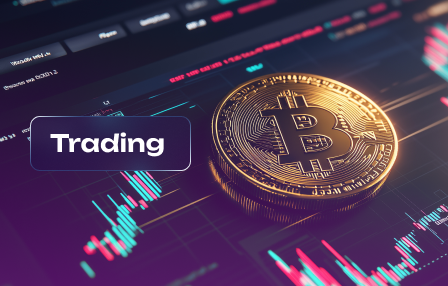The Differences Between OTC and Forex Trading
March 24, 2025
The choice between these two avenues relies heavily on understanding volume and liquidity. In the decentralized environment, participants enjoy higher flexibility, allowing them to negotiate directly with their counterparty. This can lead to tailored agreements that might not be feasible in more regulated settings.
In contrast, the centralized market typically offers greater transparency with established regulation, ensuring a more standardized approach. The spread–the difference between buying and selling prices–tends to be narrower here due to competitive forces among brokers, which can benefit traders looking for efficiency in execution.
Understanding how each market operates is pivotal. While the former can provide significant opportunities for customization and potentially lower costs, the latter offers security and reliability backed by regulatory frameworks. Evaluating your trading strategy against these factors will inform better decisions moving forward.
Market Structure Comparison
Analyze the liquidity profiles: the over-the-counter space generally exhibits lower liquidity compared to its counterpart. This is due to the decentralized nature of transactions, where counterparties negotiate directly, impacting volume and execution speed.
The centralized exchanges in the currency market boast higher liquidity, allowing for more consistent pricing and tighter spreads. Traders benefit from this structure as it enhances their ability to execute orders swiftly without significant price slippage.
Regulatory oversight varies significantly. The currency market is typically subject to stringent regulations that foster transparency and mitigate risk, while the decentralized framework often lacks similar oversight, leading to potential disparities in price discovery and security.
Consider the spread dynamics: in a regulated environment, spreads tend to be narrower due to competition among market makers. Conversely, in less regulated settings, spreads can widen considerably, affecting trading costs and overall profitability.
Volume measurements also highlight differences. Currency markets often see daily volumes exceeding several trillion dollars, ensuring ample opportunities for participants. In contrast, OTC transactions may reflect lower aggregate volumes, limiting exposure for traders seeking substantial positions.
In summary, understanding these structural distinctions can empower traders to choose environments that align with their risk appetite and strategic objectives, optimizing their approach to market participation.
Liquidity and Trade Execution
For effective participation, understanding liquidity dynamics is fundamental. The mechanisms through which orders are executed play a pivotal role in trading experiences across both markets.
- Liquidity: The forex market boasts high liquidity due to substantial daily volume, often exceeding $6 trillion. This ensures that traders can enter and exit positions with minimal price disruption.
- Execution Speed: Rapid execution is a hallmark of forex markets, driven by electronic platforms facilitating near-instantaneous transactions. In contrast, over-the-counter environments may experience delays due to lower participant numbers and variable order routing.
- Spread Variability: In highly liquid forex pairs, spreads tend to be narrower. Conversely, less popular pairs or OTC options can present wider spreads, affecting overall cost.
- Market Depth: Forex platforms provide deeper markets, allowing for larger order placements without significant impact on price. OTC markets might not support such volumes consistently.
Regulatory frameworks in the forex sector enhance transparency and fairness, contributing to improved liquidity management. Well-regulated environments ensure that participants face lower risks related to counterparty defaults compared to less regulated counterparts.
- Choose major currency pairs: Opt for more liquid options to minimize spread costs and slippage.
- Use limit orders: To control entry points and manage execution prices effectively.
- Monitor economic events: High-impact news releases can affect liquidity and spread behavior significantly.
A meticulous approach to understanding these elements leads to strategic advantages in enhancing trade execution outcomes while navigating various market conditions.
Regulation and Oversight
Choose platforms with robust regulatory frameworks to enhance the safety of your transactions. In the decentralized market, oversight varies significantly. Regulatory bodies monitor market activities and set standards, which mitigates counterparty risks. This aspect is crucial in fostering trust among participants.
The foreign exchange sector typically operates under strict regulations from agencies like the Commodity Futures Trading Commission (CFTC) and the Financial Conduct Authority (FCA). These authorities ensure transparency, requiring brokers to maintain certain capital reserves, thereby promoting liquidity and stability.
In contrast, the decentralized model often lacks such stringent regulation. While this can offer flexibility, it also increases exposure to fraudulent entities. Participants should conduct thorough due diligence on their counterparties, ensuring they operate within a legal framework that provides necessary safeguards against malpractices.
Volume transparency is another critical factor. Regulated exchanges are obliged to report trading volumes, allowing for better price discovery and mitigating manipulation risks. On unregulated platforms, discrepancies may exist, making it difficult to gauge actual market conditions.
Prioritize working with entities that adhere to recognized standards. This choice not only enhances your trading experience but also fortifies your position against unexpected volatility in the marketplace.
Cost and Fees Analysis
Evaluate the cost structure before engaging in either market. The traditional exchange environment typically involves variable spreads, which can widen significantly during periods of low volume or high volatility. Consider fixed commissions that some platforms may charge per transaction.
Liquidity plays a critical role in determining costs. High liquidity can lead to tighter spreads, whereas lower liquidity may result in higher trading costs due to increased spreads. Ensure to analyze liquidity metrics specific to the instruments you intend to trade.
Furthermore, examine any potential fees associated with deposit and withdrawal processes. Some brokers impose additional charges for currency conversions or bank transfers that can impact overall profitability.
Regulation also influences pricing. Brokers operating under stringent regulatory frameworks may offer more transparent fee structures but could have higher base costs due to compliance requirements. Assess whether the benefits of enhanced security and oversight justify any additional expenses incurred.
Overall, a thorough comparison of spreads, commission rates, and ancillary fees will reveal the true cost landscape of your chosen marketplace. This insight is vital for optimizing your trading strategy and maximizing returns.



